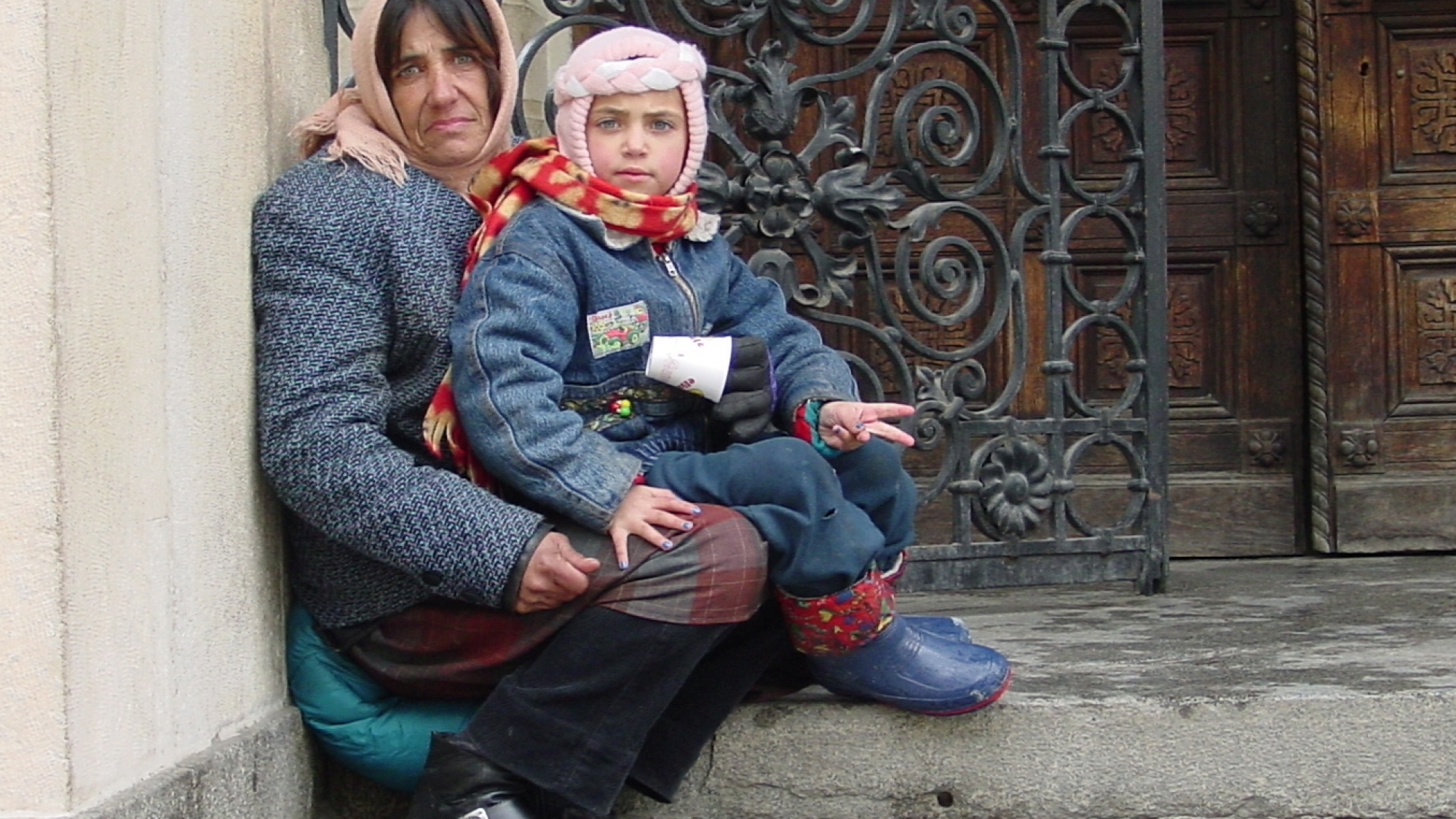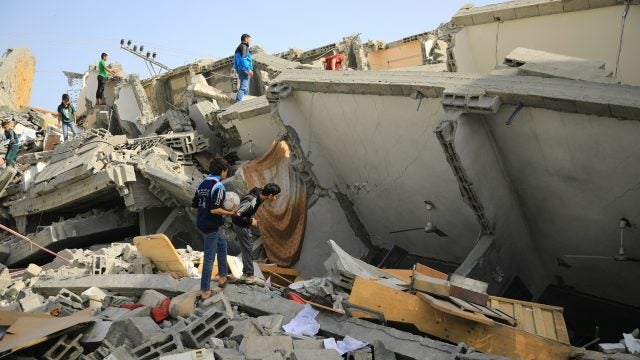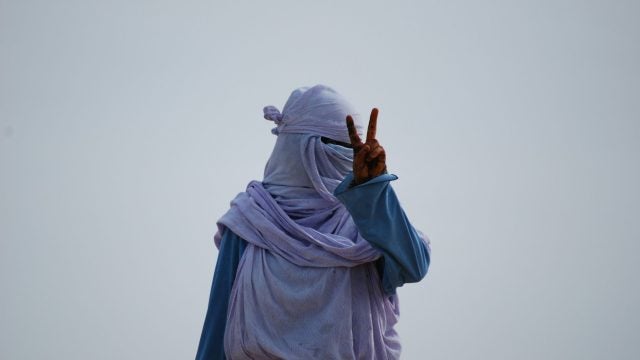
Title: Early Marriage in Romani Communities: Looking Beyond Tradition
The Romani “tradition” of early marriage is not just a quaint custom. Human rights activists emphasize that it is a cover for a profound issue of segregation and discrimination against Romani communities.
“While I have already passed the age when my family expected me to get married, reaching this stage in life was not easy,” said Natali Tomenko, a Ukrainian activist of Romani origin in her late twenties.[1] Although Romani communities differ within the country, her story resonates with thousands of other girls across Europe.
In eleven European Union (EU) states, including France, Italy, and Spain, approximately two percent of Romani girls aged ten to fifteen are married or cohabiting with a partner—the number rising to sixteen percent when accounting for Romani women aged sixteen to seventeen. In some parts of the Balkans, compared to the national average of 10 percent, a striking fifty percent of all Romani women aged 20 to 24 were married before the age of 18. Digging deeper into these numbers and communities, it becomes apparent that they comprise more than just a phenomenon of Romani “tradition.”
Hostile Bigger World
There are ten to twelve million Romani in the European continent and six million in the EU countries, according to the European Parliament. Having arrived in Europe as early as the thirteenth century from India, they do not represent a homogenous group today.
However, there are some things that unite this diverse group: the experience of discrimination, poverty, and marginalization tracing back centuries—often collectively referred to in today’s vocabulary as antigypsyism. A recent survey by the European Union Agency of Fundamental Rights (FRA) shows that one in four surveyed Romani have been discriminated against. The Brussels-based human rights organization, the European Roma Rights Centre (ERRC), has recorded multiple cases of mob violence, evictions, school segregation, police misconduct, and ethnic profiling against Romani in European countries.
There is also a context of historic trauma—Romani were enslaved in what is now modern-day Romania until the 19th century. At least half a million Romani and Sinti were killed in the Holocaust, and Romani women were sterilized in numerous countries, including Sweden until the 1970s and Czechia as late as 2012. This traumatic history, in conjunction with the challenges currently faced by Romani communities, often leads families to view marriage as a means of securing their children’s future. Providing their daughters with husbands enables parents to ensure a feeling of safety that Romani communities have historically lacked. Research conducted by the United Nations Children’s Fund highlights these very causes behind the practice of early marriage across the globe.
Segregated Education For Romani Communities
Some community members like Edina Torday, a Romani lawyer from Hungary, argue that Romani early marriage arises from state policies that keep women in poverty, perpetuating drivers of early marriage like segregated education. “When we speak about education and quality education, this is part of it … sometimes I feel like the state doesn’t want to change [the negative trends] at all,” Torday said.
According to the European Commission, 29 percent of Romani children in Bulgaria study in segregated classrooms, 33 percent in Czechia, and 26 percent in Romania. Other EU countries with large Romani populations also segregate their classrooms. The European Roma Rights Center reports that Romani children are frequently enrolled in Romani-only classes, study with a reduced curriculum, and often face bullying and discrimination from teachers and classmates.
Although school segregation is punishable in countries where it is prevalent, these consequences have not resulted in substantive policy changes. In May 2016, for instance, the European Commission launched an infringement procedure against Hungary over its failure to desegregate its education system. Hungary has since paid compensation to Romani children for numerous school segregation cases. The highest-profile case in 2019 involved the Gyöngyöspata school, where Romani children were taught in separate classes and received an inferior education. The Hungarian Supreme Court ordered the municipality of Gyöngyöspata to pay more than €280,000 in compensation to the families of 60 Romani students. Despite this, Hungary remains one of the EU member countries wherein Romani children face the highest level of discrimination, with 45 percent being placed in segregated schools or classes.
Breaking the Cycle
No single solution can break this cycle, but community activists can play a significant role in ushering in change. They can provide education for women’s groups and set up women’s shelters. Human rights lawyers like the ERRC can sue public authorities when they fail to do their duty and provide equitable access to rights. However, if there is no political will to address the institutional racism that forces millions of Romani to live in poor, excluded ghettos where early marriage is a form of survival, then these activities can only ever palliate a much deeper problem in Europe.
Therefore, European governments must realize that the only way to end early marriage in Romani communities is to first end the exclusion of Romani from society. When seeking solutions, authorities should stop using “culture” as an excuse for neglecting their responsibility to protect Romani girls’ rights. Governments must address the root causes of early marriage by expanding access to education, reducing discrimination and discriminatory policies, and taking cases of early marriage much more seriously.
Expanding education is especially important. Some rights activists like Anna Orsós, a Women’s Rights Officer at the ERRC, believe that it is possible to end child and early marriage through inclusive and quality education. “I believe that if all of us have access to high school education, [more children could] even make it to university,” Orsós said.
To begin, countries with ages of compulsory education below eighteen like Hungary should raise the age to eighteen. This could allow more Romani girls to finish high school. Furthermore, governments should increase support for education to Romani families by providing free textbooks and meals. They should also invest in students’ living conditions by improving access to electricity, internet, water, and safe housing. These initiatives would lighten the burden on women and girls and make education more accessible for them.
In addition to making education more accessible, governments should also aim to reduce discrimination within the classroom. Romani students require a learning environment in which they are not bullied for their ethnicity, they see opportunities for their future, their curriculum is competitive for the modern workforce, and they are not segregated in classrooms.
In a similar vein, the ERRC has proposed a set of recommendations aimed at addressing the root causes of child marriage. These range from building state mechanisms of reporting and investigating individual cases of child marriage to developing social inclusion and educational policies for Romani girls that support the development of Romani communities. Governments should also fill in legal gaps which enable forced marriage. European states generally fail to apply international and national legal protections when Romani women and girls experience early forced marriage even though such human rights violations persist in Romani communities.
Furthermore, countries need to prioritize establishing effective alert and notification systems for each case of early marriage. These systems can involve input from schools, monitoring agencies, healthcare providers, and more. States should actively monitor, document, and investigate all instances of early marriages and incorporate their findings into their decision-making processes and policies, with a focus on the well-being of young Romani boys and girls. However, to implement these recommendations successfully, Romani girls must not remain invisible citizens within their countries, facing discrimination and segregation that deters them from attending school or seeking medical help.
Early marriage is an unfortunate consequence of Romani women’s exclusion from society. Communities rely on marriages to offer stability and survival to their children in an uncertain world that tells Romani they are not welcome at every opportunity. But the practice is not an immutable facet of Romani culture. The emancipation of Romani women and girls can only materialize with the elevation of their communities from the margins of society. Only by tackling the source of the problem—antigypsyism—will early marriage come to an end.
. . .
Sophie Datishvili is a communications specialist of the European Roma Rights Centre (ERRC), a human rights organization fighting against anti-Romani racism and human rights abuses in Europe. She is the author of the podcast series the Romani Tea Room.
[1] The author interviewed Natali Tomenko, Edina Torday, and Anna Orsós, all of whom consented to be included in this piece as voices of the different Romani communities that they were raised in. Tomenko is from Kremenchuk, central Ukraine and her family is from the Serbo-Romani subgroup living in the city and around the regions of Dnipro and Zaporizhia. Torday comes from an urban Romani community in Hungary, where she was lucky to be one of the few Romanis to attend a non-segregated school. Orsós was raised in a Romani settlement called Hidas near the forests of southern Hungary. She was only eight years old when people came to take only four years older sister as a bride to a fourteen-year-old Romani boy.
Recommended Articles

This piece examines the UK government’s proscription of Palestine Action under the Terrorism Act, situating it within a broader trend of shrinking space for public dissent. It argues that the…

This article analyses the distortions of the International Humanitarian Law (IHL) notion of proportionality in the context of the Israel-Gaza war. It discusses Israel’s attempts to reinterpret proportionality to justify…

The escalating women’s rights crisis in Afghanistan demonstrates a gap in international legal protections of the rights of women and girls. The international community should fill this gap by making…